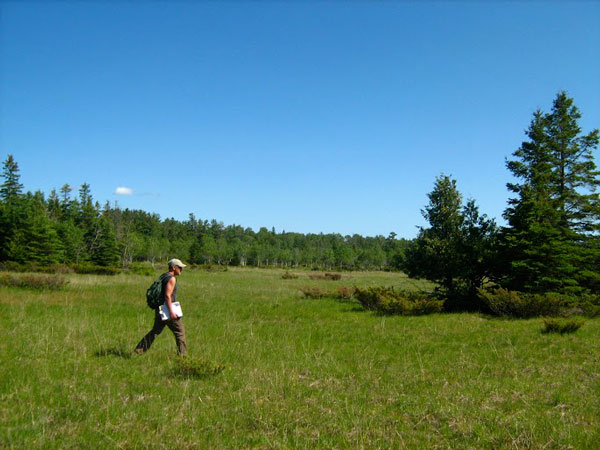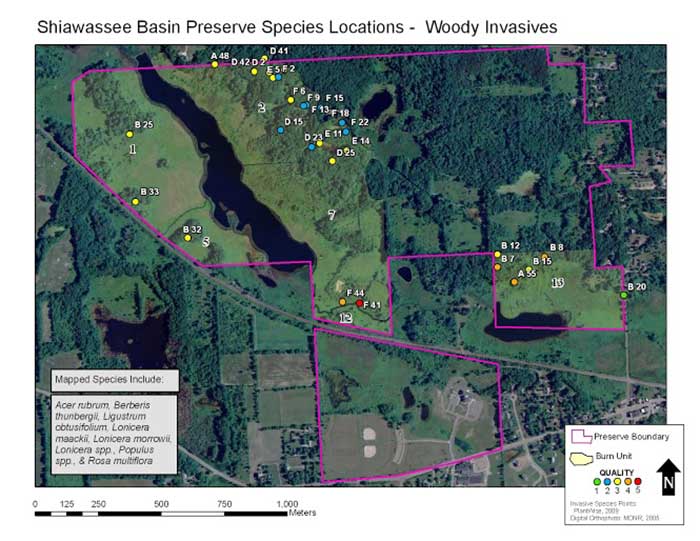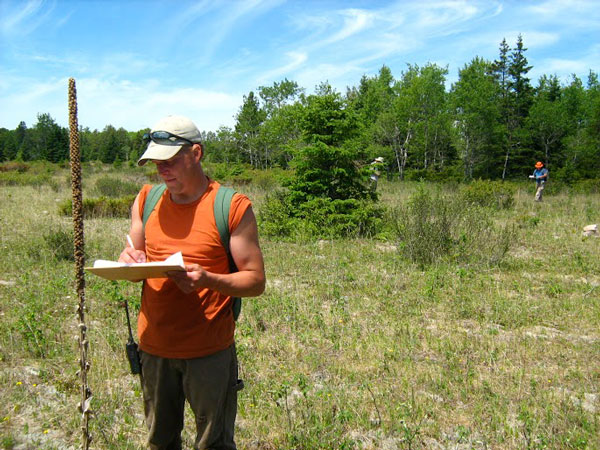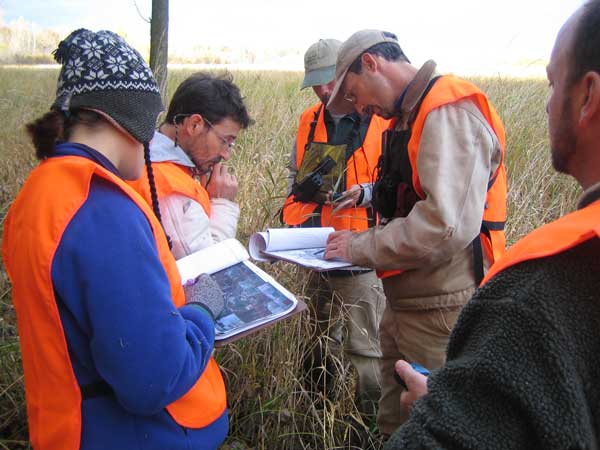Consulting
We are experts at walking sites to inventory existing species while reading the landscape to understand what changes are warranted. We use the latest technology to map plants, animals, and site features. We have developed management plans for thousands of acres of natural areas. And we love to educate landowners about the opportunities and challenges their land offers.
We are as happy to consult with a private landowner on their small sub-acre lot as we are with a conservancy or municipality on existing natural areas hundreds or thousands of acres in size.
Our consulting work is the foundation of what we do. It reflects and supports our mission to provide the best possible restoration or landscaping services for our clients while doing the most ecological and aesthetic good for the sites in which we work.
We provide consulting services in three main areas:
Education, Inventories, and Management Planning
Education
PlantWise staff have been caring for natural areas and landscaping for more than 25 years. We have a wealth of knowledge and experience in this field.
David Mindell is a frequent speaker, presenter, interpretive guide, and trainer at natural area and native landscaping events throughout Michigan.
Typical training topics include:
- The use of prescribed fire as a management tool
- Landscaping with native species
- Invasive species identification and control techniques
- Restoration techniques, timing, and tools
PlantWise has been an active member of the Stewardship Network since 2000. Check the Stewardship Network’s training schedule to view upcoming workshops offered by PlantWise and/or others at https://www.stewardshipnetwork.org/events/.
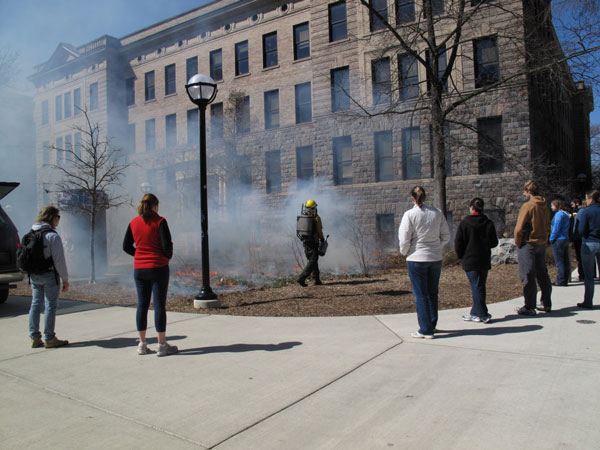
Inventories
A key element in understanding how to manage your site is knowing what’s there. Plant and animal inventories are a concrete way of letting you know how your site is changing based on what you’re doing or not doing.
PlantWise conducts inventories for plants, herpetofauna (frogs, toads, salamanders, snakes, etc), birds, butterflies, aquatic invertebrates, and small mammals.
Our past work in this area has assisted clients in developing management plans, allowed for compliance with permitting processes, or simply helped landowners appreciate what’s on their sites.
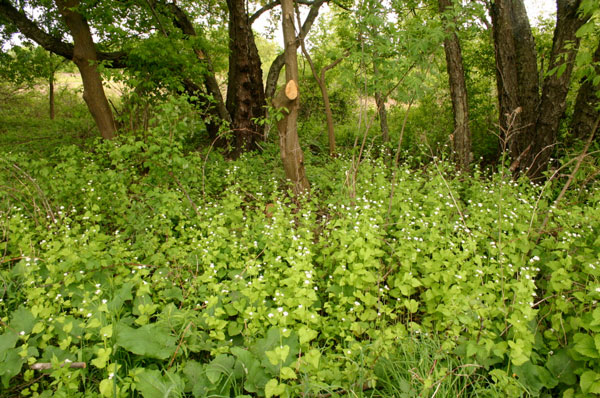
Management Planning
At PlantWise, we have been developing management plans for public, corporate, and residential landowners since 1998.
Developing a plan from which to base management decisions is a smart way to begin efforts to enhance the diversity of your site. Management plans vary widely in the level of detail and context they provide for your actions. The most important factor for choosing which planning approach is right for you is to pursue a plan that is simple enough to implement yet detailed enough to know what your management objectives are and how to pursue those objectives.
Approaches
We believe that it is important to:
- Have plans that are easy to understand and implement
- Obtain enough information about your site that your management decisions are made within the site’s context as a whole
- Develop plans that are easily modifiable, based on the actions you take and how the land responds to those actions
Past Clients
A sample of past management planning clients and projects include:
Williamstown Township: Conducted plant inventory and developed management plan for Township’s 132-acre natural area park.
Michigan DNR, Newberry Field Office: Mapped (using GPS) all invasives species occurrences in State Park Campgrounds in western Mackinac County and developed management plans to prioritize and address the weed problems.
Consultant to Natural Area Preservation Division, Ann Arbor Parks & Recreation Department: Developed management priorities for restoration of park natural areas and determined control techniques, timing, and resource needs for each project.
Consultant for City of Orchard Lake Village: Developed management plan for City’s Nature Sanctuary with focus on invasive species control. Followed up with City by implementing elements of that invasives control.
Pfizer, Inc.: Conducted plant and animal inventories, developed management recommendations, conducted wetland monitoring, implemented management activities (including invasives control, prairie seeding, prescribed burning, etc).
Examples
From a weed management plan developed for the Michigan Department of Natural Resources MDOT Cut River Scenic Area:
This is a very complicated site for controlling the extensive garlic mustard populations found here. Steep slopes and sandy soil make erosion as large an issue as the spread of garlic mustard. In fact, erosion may be the most critical issue at this site, since it is the soil disturbance related to the erosion that creates hospitable areas for garlic mustard and other weeds to colonize. Because of the ecological implications of the erosion here, no foliar applications should take place at times when native vegetation may be effected by herbicide drift. Past herbicide applications appear to have decimated native plant populations, especially along the river’s edge. See photo 1.
Erosion should be addressed through a combination of installing check damns and water bars in areas where water is channelizing soil (see photo 2); installing railings and signs advising visitors to remain on existing trails (even rope strung from post to post could be effective and inexpensive); and sowing fast-germinating shade-tolerant vegetation (such as Virginia wild rye (Elymus virginicus)) and more deeply-rooted native groundcover vegetation. Zigzag goldenrod (Solidago flexicaulis), hairy goldenrod (S. hispida), flat-topped aster (Aster umbellatus), and big-leaved aster (A. macrophyllus) are all good choices for seeding into the site.
In the main publicly accessible portions of the site, garlic mustard control should then focus on populations at the periphery of the site and those along trails to reduce the chance of visitors moving seed throughout the site or to another area in the county. In other words, during this first phase, efforts should focus on containment rather than eradication. Outlier populations should be treated using a combination of fall foliar-spraying (after natives are dormant but before leaf-fall) and late-spring cutting. Cut stems should be bagged and removed from the site.
From a Management Plan developed for a city in southeast Michigan:
The sanctuary is a wonderful resource for the City of **. It’s location in the midst of extensive development provides a refuge for many plant and animal species that otherwise would not be likely found in the area. However, this “island effect” also limits the species that might otherwise migrate into or out of the site while also providing a set of challenges and threats to the site.
Some of these challenges and threats cannot necessarily be addressed by actions within the sanctuary (such as the impact of fragmentation and excess light and noise on sanctuary wildlife). The threat that can most readily be dealt with is the issue of invasive plant species and their impact on the native diversity within the site. Invasives should be removed from the site, beginning with the highest quality areas and working out from there. In addition, no new plant species should be introduced to the sanctuary without first checking that the species is native to southeast Michigan.

